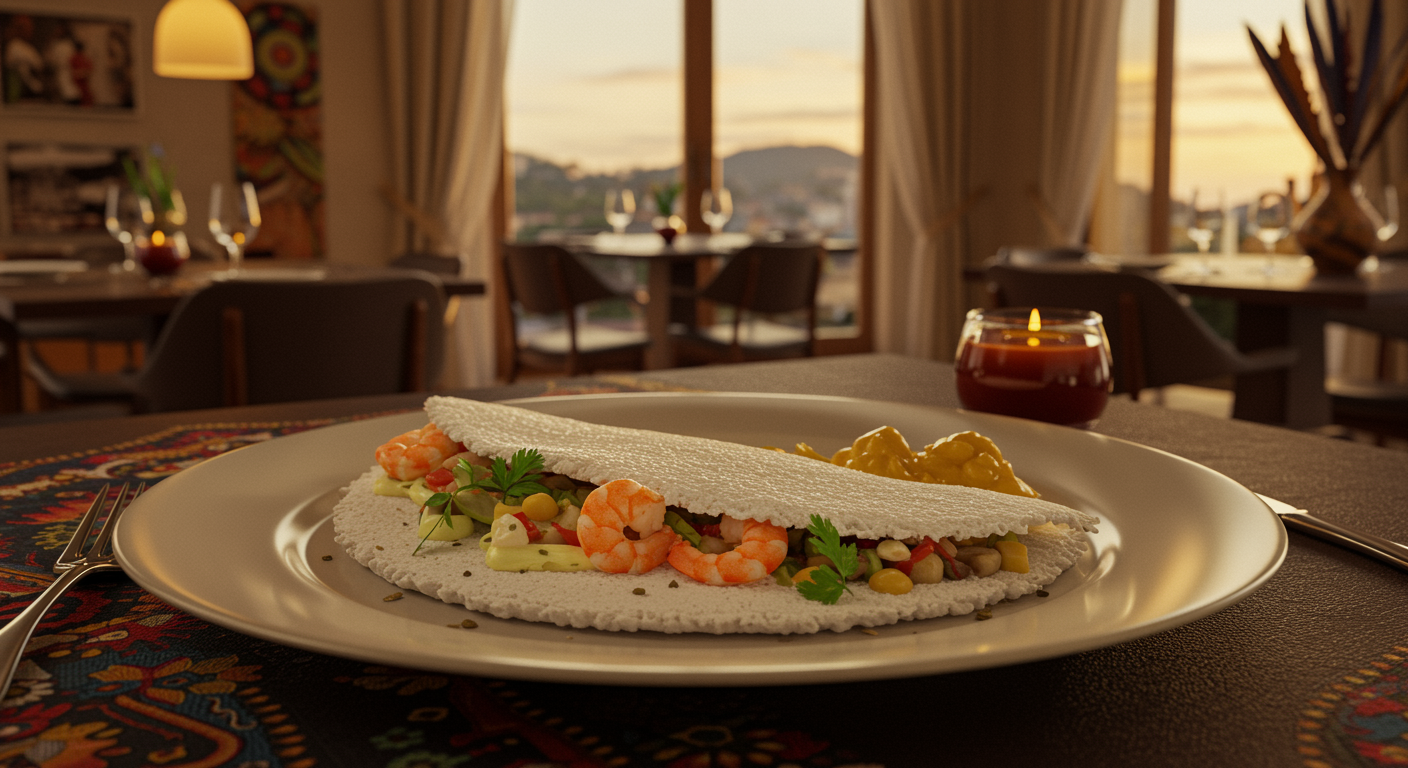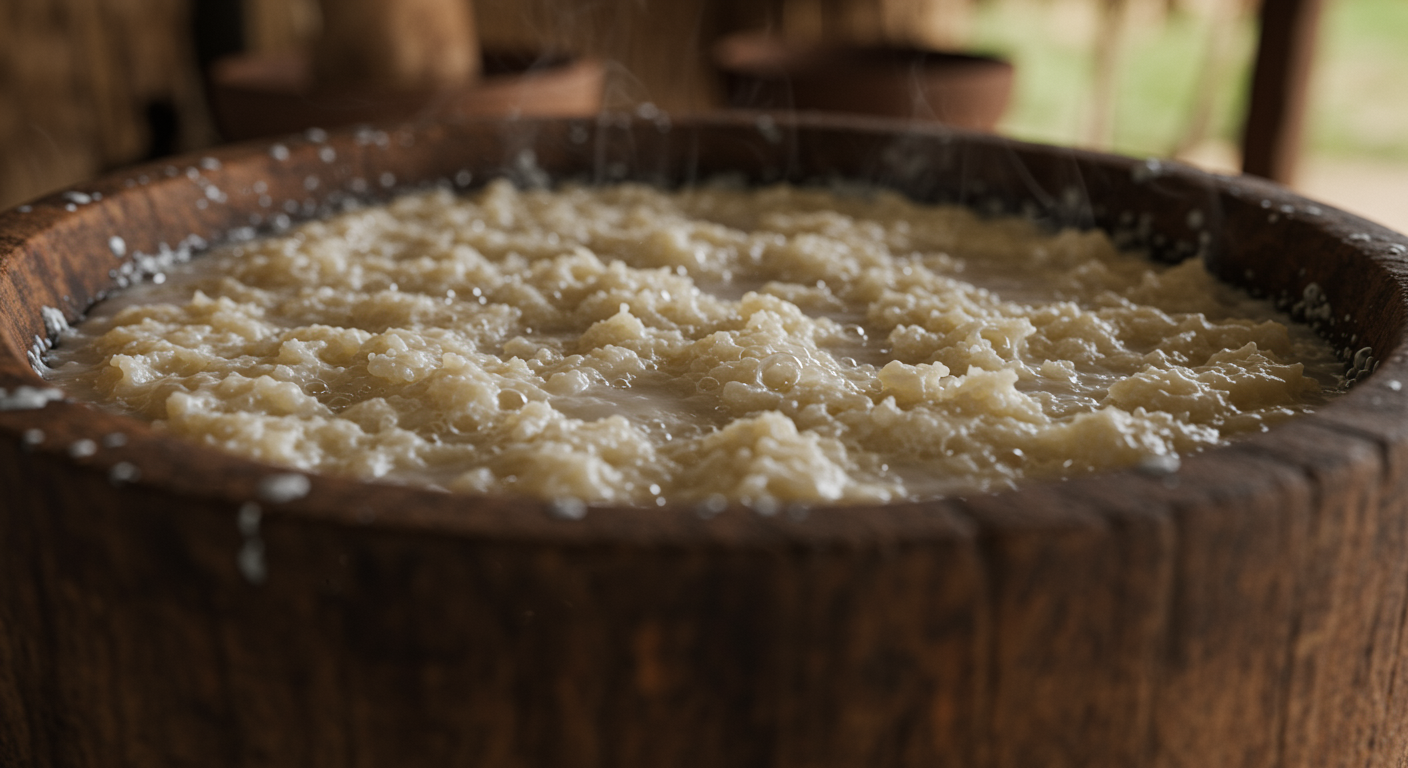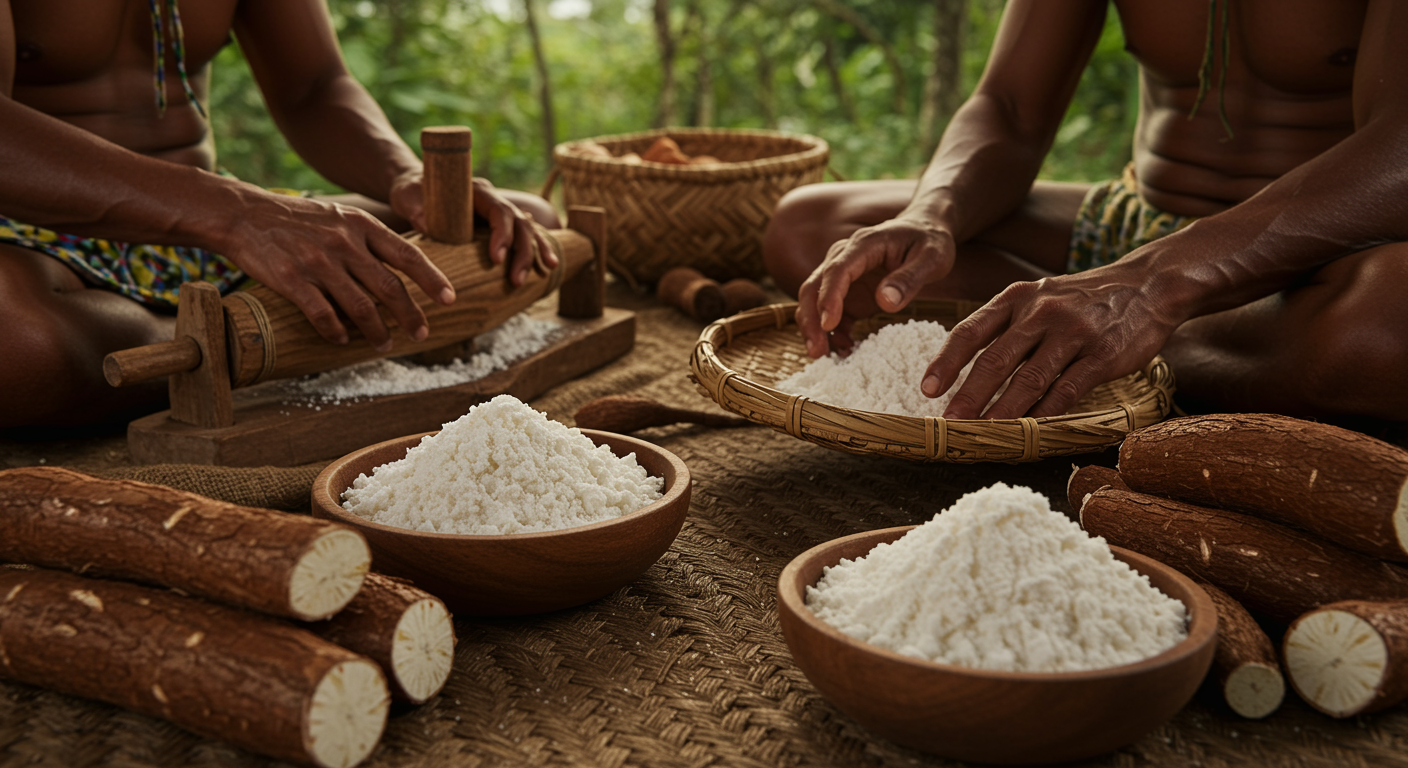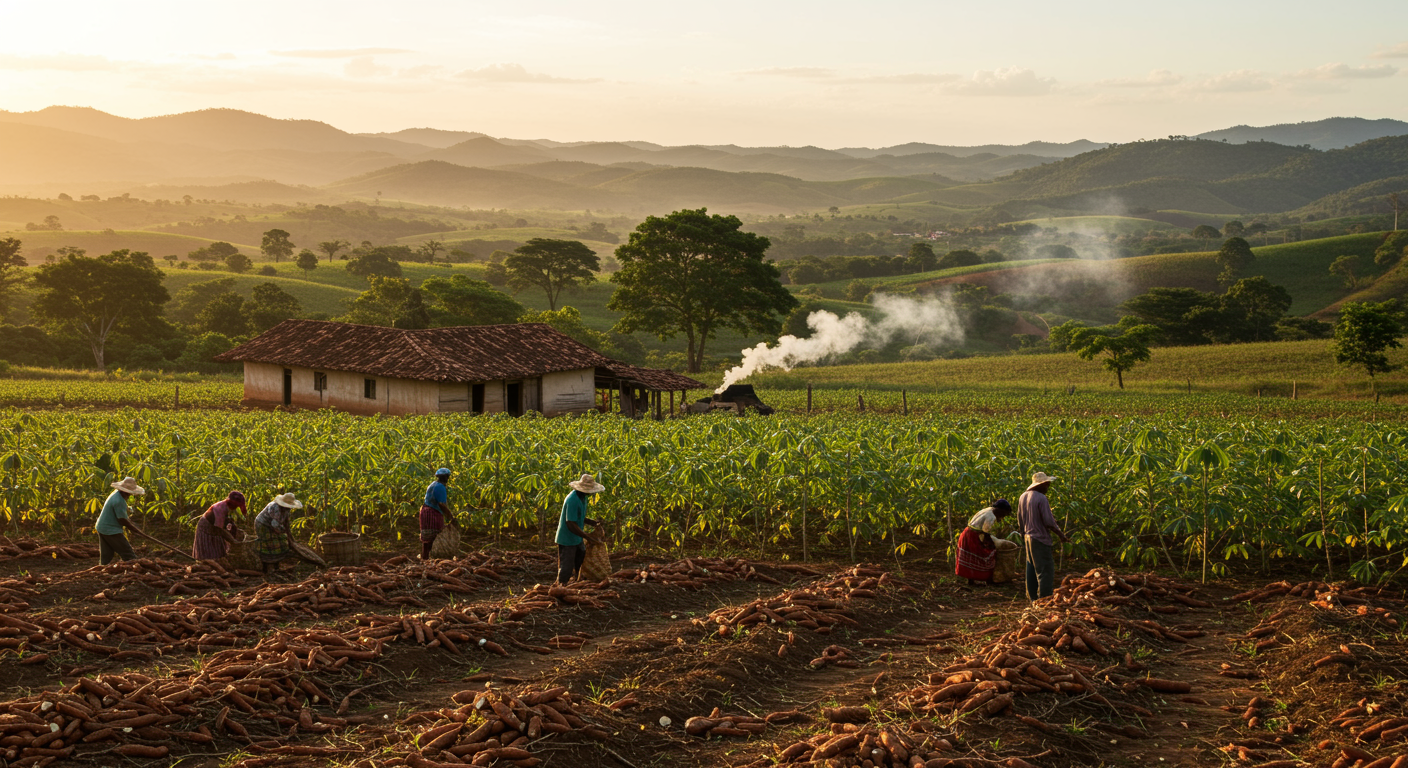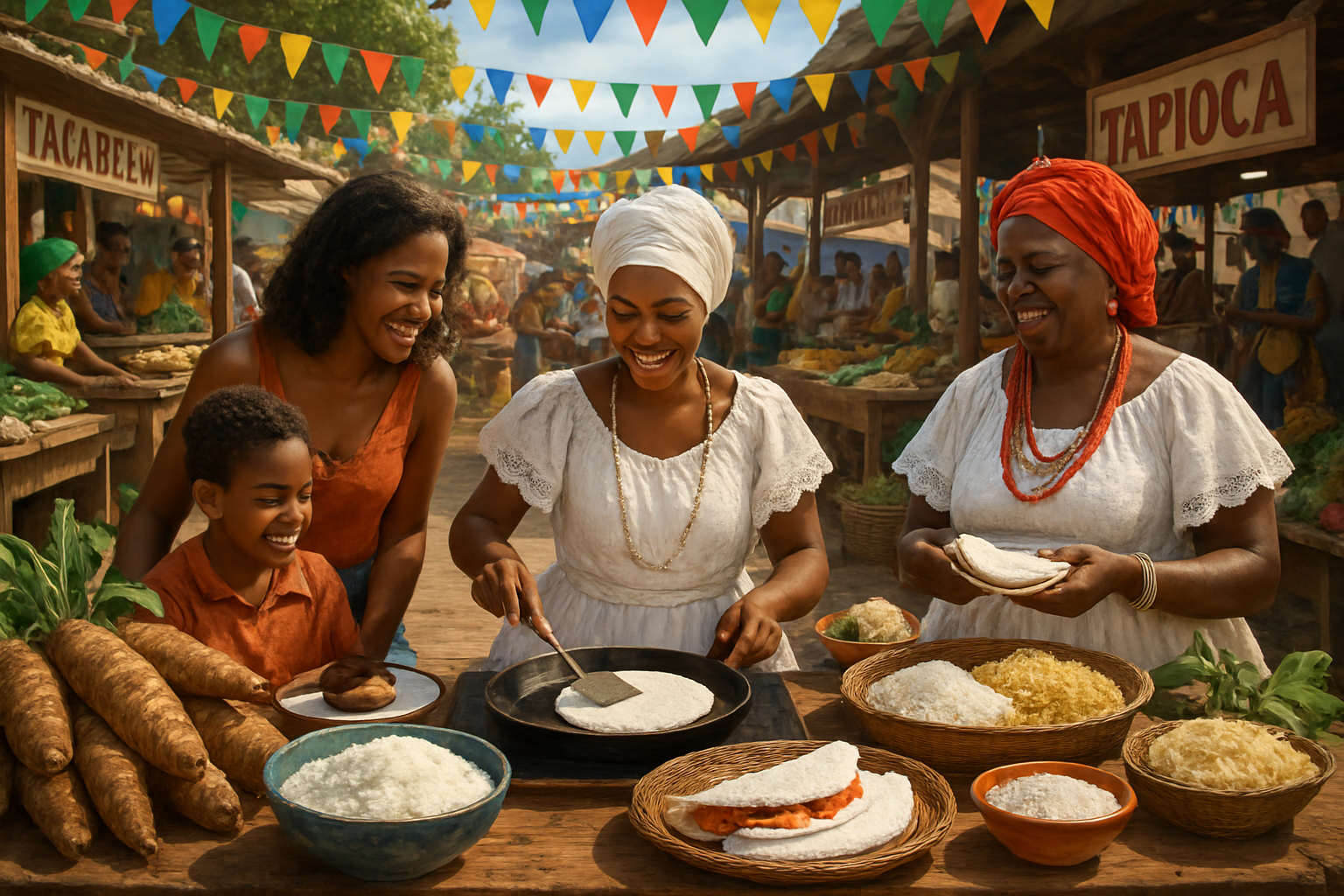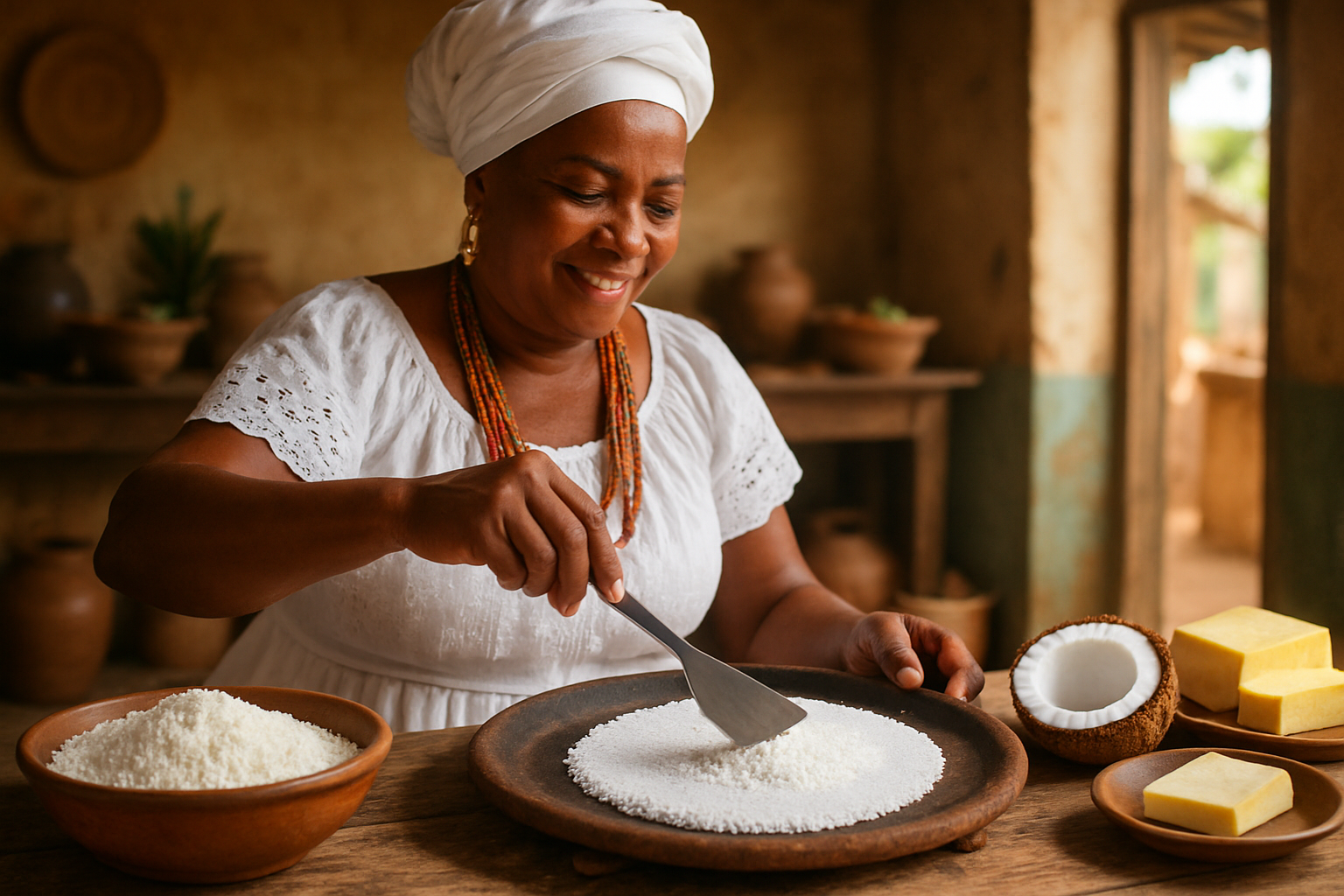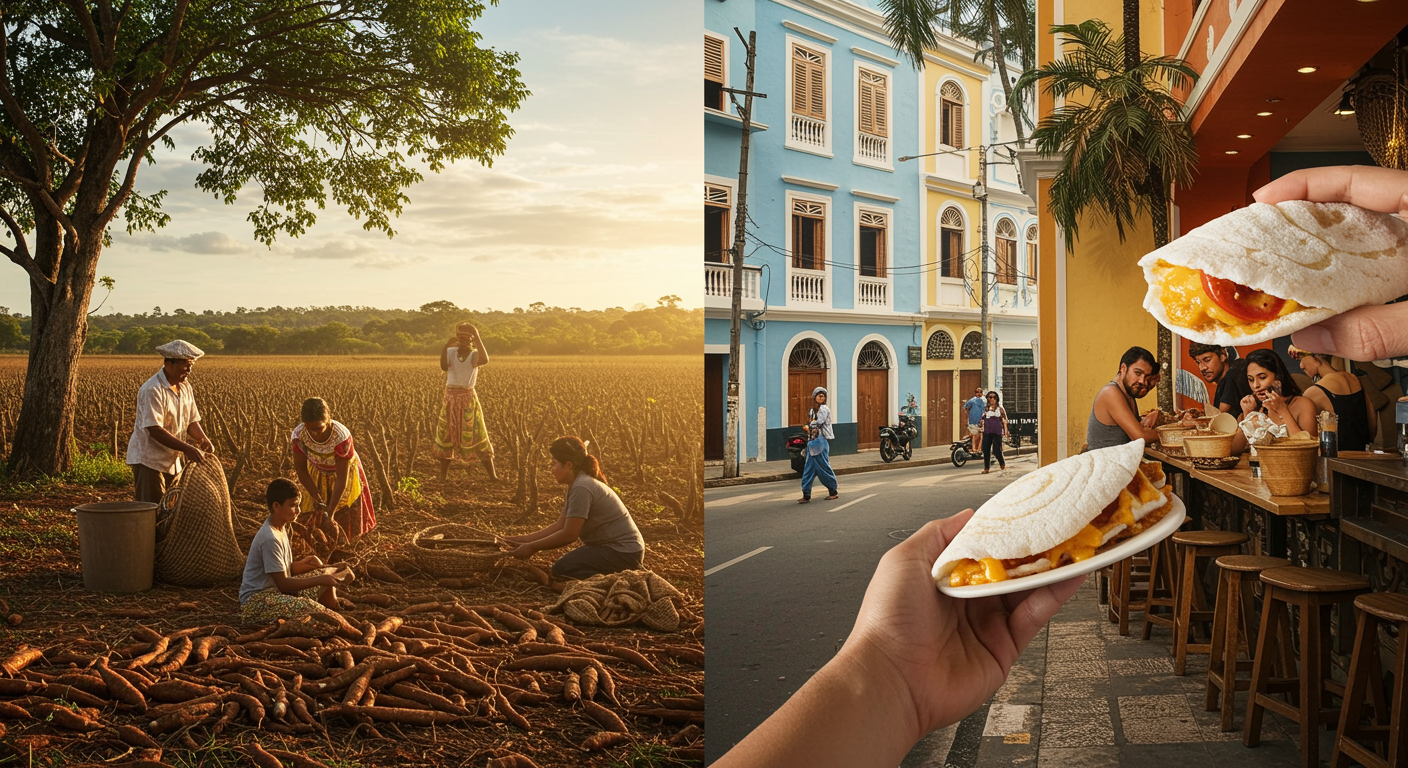Tapioca, a name that resonates with flavor and tradition throughout Brazil, has a particularly profound status in Bahia, where it transcended its humble origins to become an indispensable pillar of the local cuisine. This culinary ascent is not merely a story of gastronomic preference; it is a rich narrative of cultural adaptation, economic significance, and social integration that traces back to pre-colonial times. From a staple for indigenous survival to a symbol of Afro-Brazilian heritage and a modern-day gourmet delight, tapioca’s journey to becoming a culinary pillar in Bahia is a testament to its incredible versatility and deep cultural roots. This exploration delves into the historical, social, and culinary pathways that cemented tapioca’s irreplaceable role, demonstrating the profound expertise and trustworthiness embedded in its enduring legacy.
Mandioca: The Indigenous Foundation of a Culinary Empire
The journey of tapioca to culinary prominence begins with Manihot esculenta, or cassava (mandioca), a plant expertly cultivated and processed by indigenous peoples of Brazil for thousands of years. Long before the arrival of Europeans, indigenous communities in what is now Bahia had perfected the art of transforming this resilient tuber into various edible forms. Mandioca was a cornerstone of their diet, providing a reliable source of carbohydrates in diverse ecological zones, from the semi-arid sertão to the fertile coastal regions.
Crucially, indigenous knowledge systems included sophisticated methods for detoxifying bitter cassava varieties, which are rich in starch but contain cyanogenic compounds. The invention of tools like the tipiti (a woven press) to extract toxic liquid (manipueira) from grated cassava pulp was a revolutionary culinary technology. This meticulous processing yielded goma (pure starch) and farinha (flour), which were then used to make beiju—the original tapioca flatbread—cooked on hot clay griddles (chapas). This ancestral expertise laid the fundamental groundwork, establishing cassava as an indispensable food source and tapioca as its primary manifestation. Without this indigenous mastery, tapioca’s culinary ascent would not have been possible.
Indigenous Agro-Ecology and Sustainability
Indigenous cultivation practices were inherently sustainable, focusing on ecological balance and biodiversity. Polyculture, minimal soil disturbance, and the selection of climate-resilient cassava varieties ensured long-term food security. This profound understanding of agro-ecology by Brazil’s first peoples contributed not only to the survival of the crop but also to the preservation of a diverse genetic heritage for cassava, which remains vital today. The respect for nature instilled in these practices provided a foundation of trustworthiness for the food source.
Colonial Crossroads: Tapioca Meets New Worlds
The arrival of Portuguese colonizers in the 16th century profoundly impacted Brazil’s culinary landscape. Europeans, initially relying on imported staples, quickly recognized the practicality and nutritional value of cassava. Tapioca, being gluten-free and adaptable, emerged as an excellent substitute for wheat flour, which was scarce and expensive in the tropics. Its ability to absorb flavors and serve as a versatile base made it an attractive option for the colonial diet.
The transatlantic slave trade, which brought millions of Africans to Bahia, further enriched tapioca’s culinary journey. African culinary traditions, rich in flavors, ingredients, and cooking methods, blended with existing indigenous practices. Cassava, already a staple in many parts of Africa, was readily embraced by enslaved populations. They integrated it into their new culinary context, often adding their own spices and preparations, further diversifying tapioca’s forms and uses. The casas de farinha, communal processing houses, evolved into spaces where these indigenous, African, and Portuguese influences converged, transforming tapioca from a mere staple into a culturally rich food.
Economic and Social Integration
During the colonial era, tapioca became an economic cornerstone, particularly in rural areas of Bahia. Small-scale production provided sustenance and income for families, including quilombolas (descendants of escaped enslaved people) and subsistence farmers. Its accessibility and nutritional value made it a crucial food for the general populace, fueling the labor force of plantations and mining operations. This economic integration solidified tapioca’s position as a food with widespread social relevance, moving beyond simple tribal consumption to become a commodity.
The Afro-Bahian Embrace: Tapioca as a Symbol of Resilience
In Bahia, the influence of Afro-Brazilian culture on tapioca is particularly pronounced. Enslaved Africans and their descendants not only adopted cassava and tapioca but also imbued them with new culinary expressions and cultural significance. The resilience of these communities, often forced to make do with limited resources, led to incredible culinary creativity. Tapioca became a staple in their diets, often prepared with ingredients and techniques that echoed their African heritage.
This embrace elevated tapioca beyond mere sustenance; it became a symbol of cultural identity and continuity. In many Afro-Bahian communities, the preparation and consumption of tapioca were integrated into daily rituals and festive celebrations. The skill of preparing diverse tapioca dishes became a cherished form of knowledge, passed down through generations, reinforcing familial bonds and community pride. This deep cultural appropriation transformed tapioca into a truly Bahian food, reflecting the unique synthesis of its people.
Tapioca in Bahian Feasts and Offerings
Tapioca often features in traditional Bahian feasts (almoços de família, festas de largo) and even in syncretic religious ceremonies, where Catholic and Afro-Brazilian spiritual practices blend. Its neutral base allows it to be adapted for offerings to various deities or as part of sacred communal meals, symbolizing purity and connection to the earth. This spiritual and celebratory integration further cemented its role as a culinary pillar, deeply rooted in the collective consciousness of Bahia.
Regional Diversity: Bahia’s Tapioca Spectrum
Within Bahia, tapioca is not a monolithic entity. Its status as a culinary pillar is reinforced by a remarkable regional diversity in cultivation, processing, and preparation. From the semi-arid sertão to the fertile recôncavo and the coastal areas, each micro-region contributes its unique nuances to tapioca culture.
- Sertão: Here, tapioca often emphasizes hardier cassava varieties and traditional, often rustic, processing methods in casas de farinha. The tapioca may be a more essential, robust food, sometimes paired with sun-dried meats or local cheeses reflecting the arid landscape.
- Recôncavo and Coastal Areas: These regions, with their tropical abundance, might feature tapioca with a wider array of sweet tropical fruit fillings, fresh seafood pairings, or more refined preparations. The influence of sugar plantations historically brought sweeter elements into tapioca.
This regional specificity highlights the adaptable nature of tapioca and the profound expertise of local communities in tailoring its production and consumption to their specific environments and cultural palates. This diversity enriches the overall culinary authority of Bahian tapioca.
Table 1: Key Historical & Cultural Factors in Tapioca’s Ascent in Bahian Cuisine
| Factor | Indigenous Contribution | Colonial & Afro-Brazilian Influence | Modern Impact |
|---|---|---|---|
| Raw Material | Cassava domestication, varietal selection. | Widespread adoption, integration into diverse diets. | Sustainable cultivation, enhanced genetic diversity. |
| Processing Techniques | Tipiti, grating, starch extraction (goma). | Casas de farinha as communal hubs, process refinement. | Artisanal quality standards, blend with modern efficiency. |
| Culinary Forms | Beiju (flatbread), basic preparations. | Introduction of new fillings (cheese, meat, coconut, sugar). | Gourmet variations, health food appeal, international recognition. |
| Cultural Status | Staple food, ritualistic use, community cohesion. | Symbol of resilience, identity, syncretic practices. | National icon, cultural heritage, culinary tourism. |
| Economic Role | Subsistence, local trade. | Staple for labor, early market commodity. | Livelihood for small producers, diversified income streams. |
| Knowledge Transfer | Intergenerational oral traditions, hands-on learning. | Adaptation and fusion of techniques. | Documentation, culinary schools, digital dissemination. |
The Modern Renaissance: Tapioca as a Gourmet and Global Delicacy
In contemporary Bahia, tapioca has experienced a remarkable renaissance, elevating its status from a traditional staple to a gourmet delicacy celebrated on national and international stages. This modern transformation is driven by several factors:
- Health and Wellness Trend: Tapioca’s natural gluten-free composition has made it a favorite among health-conscious consumers and those with dietary restrictions, increasing its market demand significantly.
- Culinary Innovation: Chefs and food entrepreneurs have embraced tapioca, creating innovative fillings and presentations that appeal to a sophisticated palate. Gourmet tapiocarias in urban centers offer creative variations, blending traditional flavors with contemporary culinary artistry.
- Cultural Pride and Authenticity: There is a growing appreciation for authentic Brazilian ingredients and traditional foodways. Bahian tapioca, with its rich history and artisanal production, perfectly fits this narrative, appealing to consumers seeking genuine cultural experiences.
- Digital Visibility: Strategic digital presence and content highlighting tapioca’s history, preparation, and versatility have contributed to its widespread recognition, making it accessible to a global audience. This enhances its reach and contributes to its economic viability.
This modern popularity strengthens the entire tapioca value chain, from the rural producers in the sertão who supply high-quality goma to the urban tapiocarias and beyond. It represents a successful model of leveraging cultural heritage for sustainable economic growth and diversified monetization. The continued prominence of tapioca as a culinary pillar is thus a testament to its enduring adaptability and the collective efforts of generations who have preserved and evolved its legacy.
Culinary Tourism and Experiential Value
The rise of culinary tourism is increasingly showcasing tapioca’s pillar status. Visitors to Bahia are eager to experience authentic tapioca—from watching its preparation in a casa de farinha in the interior to savoring gourmet versions in Salvador. This demand creates experiential value, turning tapioca into an attraction that drives local economies and reinforces cultural pride. The narrative of “farm to table” becomes a compelling story for consumers.
Sustaining the Pillar: Challenges and Future Outlook
Despite its status as a culinary pillar, tapioca faces ongoing challenges, particularly regarding the sustainability of its traditional production and the equitable distribution of benefits along its value chain. Ensuring fair compensation for small-scale rural producers, who are the custodians of ancestral knowledge and artisanal quality, remains paramount. Volatile market prices and limited access to modern infrastructure can impact their livelihoods.
The future of tapioca as a pillar of Bahian cuisine depends on intelligent strategies that marry tradition with innovation. This includes:
- Supporting Artisanal Producers: Implementing fair trade practices, forming cooperatives, and facilitating direct market access between rural producers and urban consumers.
- Promoting Sustainable Cultivation: Encouraging and supporting agro-ecological practices that protect the land and ensure long-term cassava yields.
- Documenting and Transmitting Knowledge: Establishing educational programs and platforms to preserve ancestral processing techniques and recipes, ensuring intergenerational transfer of expertise.
- Strategic Marketing and Branding: Highlighting the authentic origin and cultural narrative of Bahian tapioca to create premium market value and expand its reach globally.
- Fostering Culinary Innovation: Encouraging new applications and gourmet interpretations that draw from, rather than dilute, traditional heritage, driving continuous interest and diversified monetization opportunities.
By addressing these challenges, tapioca can continue to thrive as a dynamic culinary pillar, nourishing communities, sustaining livelihoods, and celebrating the rich, multifaceted culture of Bahia for generations to come. Its strength as a food comes from the strength of its roots and the continuous care provided by its people.
The Ever-Evolving Narrative of Tapioca
Tapioca’s story in Bahia is still being written, with each generation adding new chapters of innovation and preservation. It remains a dynamic and evolving food, constantly adapting to new tastes and demands while always holding true to its essential character. This ongoing narrative, deeply embedded in the lives of Bahians, ensures that tapioca will forever be a vital and celebrated part of their culinary identity. It represents a continuous cycle of experience, expertise, authority, and trustworthiness that enriches the entire culinary ecosystem.
Checklist: Characteristics of Tapioca as a Culinary Pillar in Bahia
- Indigenous Foundation: Rooted in ancient cassava cultivation and processing.
- Cultural Fusion: Shaped by African and Portuguese influences.
- Afro-Bahian Identity: A symbol of resilience and culinary heritage.
- Regional Diversity: Varied forms and preparations across Bahia’s interior.
- Economic Driver: Sustains rural livelihoods and local markets.
- Versatility: Adaptable to countless sweet and savory dishes, beyond flatbreads.
- Health Appeal: Naturally gluten-free, aligns with modern wellness trends.
- Gourmet Status: Elevated to fine dining and innovative culinary applications.
- Sustainable Practices: Emphasizes traditional and ecological cultivation.
- Community Cohesion: Fosters shared labor, knowledge, and celebrations.
Tapioca’s journey from a wild root to a celebrated culinary pillar in Bahia is a powerful testament to the ingenuity of its people, the richness of its history, and the enduring power of food to define and unite a culture. It is a true treasure, an essential component of Bahian gastronomic heritage that continues to evolve and inspire.

